Dang, but it’s been hot lately around Casa Fire Ant, although that hasn’t seemed to faze the wildlife. We’ve had lots of sightings since the last installment of Neighborhood Nature, and in fact, I’m going to break this report into two parts in an effort to avoid making you feel like you’re sitting through an endless slide show of your second cousin’s trip to the National Mustard Museum.

The appearance of black swallowtail butterfly caterpillars is a regular seasonal phenomenon. Debbie plants parsley in a pot on the back porch each spring for the sole purpose of attracting the egg-laying butterflies, and then we get to watch the larvae eat their way into the next phase of life. I’ve written about this previously here. (And here. And also here. Perhaps I’ve run this topic into the ground. Well…nah…)
This was the scene a week or so ago when the caterpillars first descended on the healthy parsley crop.
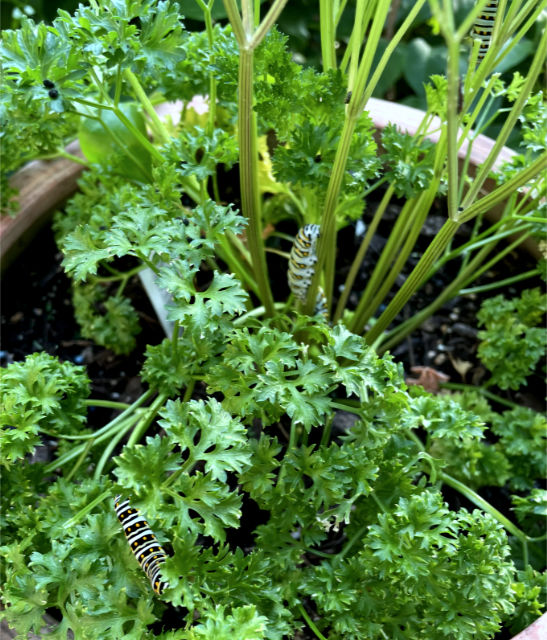
The ugly one in the upper right corner of the next photo is simply a younger caterpillar.
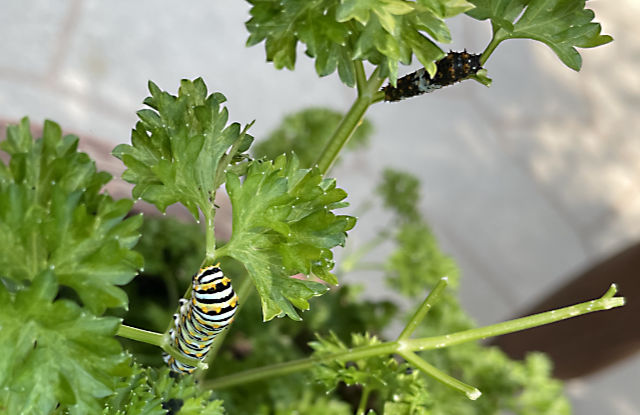
And here’s how the potted parsley appears today after the very hungry caterpillars feasted:
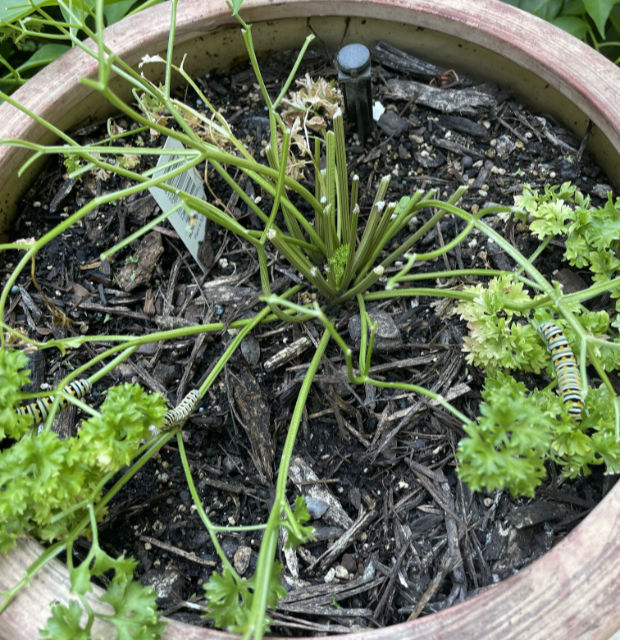
I’d normally be hard-pressed to describe one of these caterpillars as cute, but the view of its tiny feet wrapped around a parsley stem kinda is…cute.
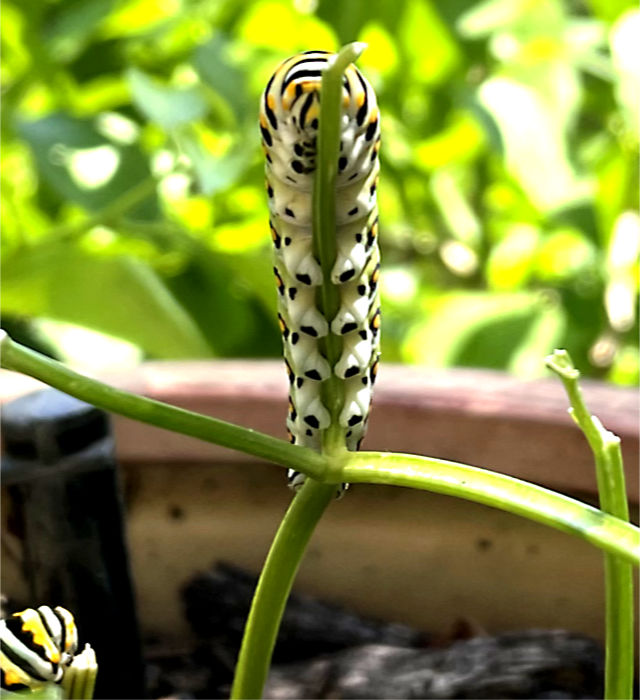
Following is a short video that shows how quickly the caterpillars are able to devour the leaves of the parsley plant. (I apologize if the video induces motion sickness; it was the best I could do with a handheld, zoomed-in phone.)
As of the date of this post, the caterpillars have fled the scene, and we hope they’re living their best lives as chrysalises (chrysali? chrysalae?), but if so, we haven’t been able to locate them.

Continuing with a peek at the wonderful world of invertebrates, a tiny praying mantis was hanging out on the back porch a few days ago. He was surprisingly patient during the photoshoot.
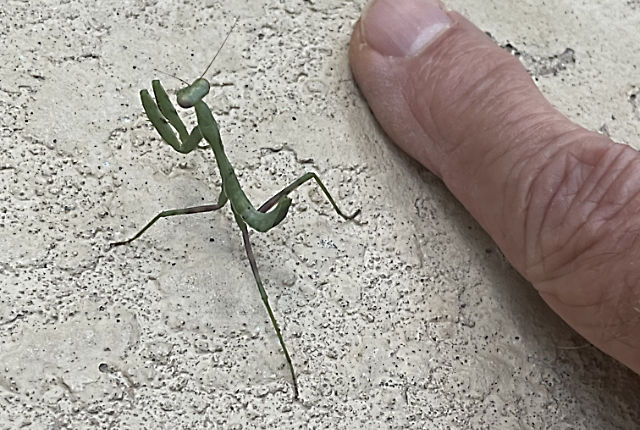

I also ran across a bit of drama — insect-on-insect violence to be specific — as I watched a juvenile assassin bug drag a carpenter bee around the porch. The bee was larger than the bug, and I’m not sure the latter actually had a workable plan about what to do with it when it got to wherever it was going.
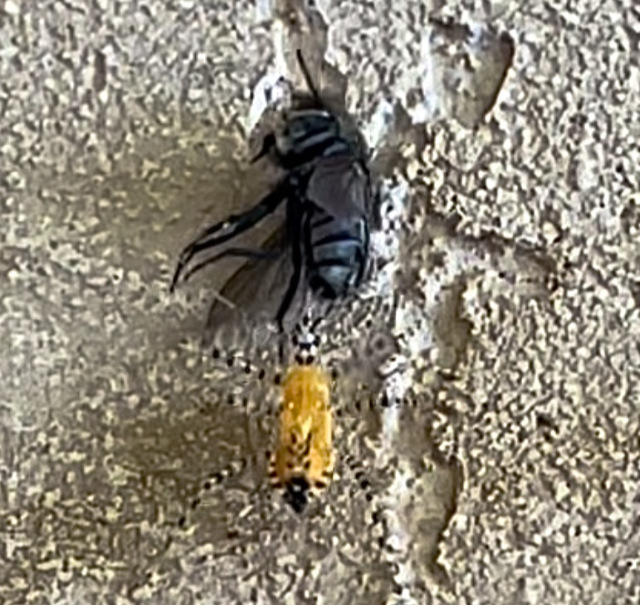
I realize this is a poor quality photo. The assassin bug was moving too fast to get a better one. I did, however, take a short video and you can get a better idea of the action here:

Another seasonal phenomenon is the appearance in our pecan trees of walnut caterpillars, which also means that I indulge in seasonal griping via the Gazette — see here and here. They’ve been particularly destructive this year, significantly thinning out sections of our trees and making a real mess on our deck. I don’t think there will be any lasting impact to the trees, but I’m getting really tired of using a leaf blower two or three times a day to clean the frass from the deck and patio.
It would have been nice had we gotten more help from the beetle shown below. It’s one of the ground beetles, and more specifically, a Fiery Searcher Caterpillar Hunter (Calosoma scrutator). This beetle comes by its name honestly, as it is a caterpillar predator. In fact, I took this photo as the beetle was climbing up the trunk of one of our pecan trees in order to feast on a virtual smorgasbord of fuzzy caterpillars. As beetles go, it’s quite pretty.
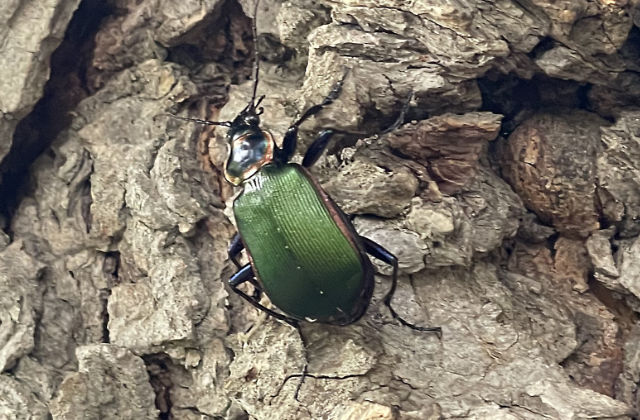

Here’s Part 2, which focuses on mammals and reptiles.
Discover more from The Fire Ant Gazette
Subscribe to get the latest posts sent to your email.

